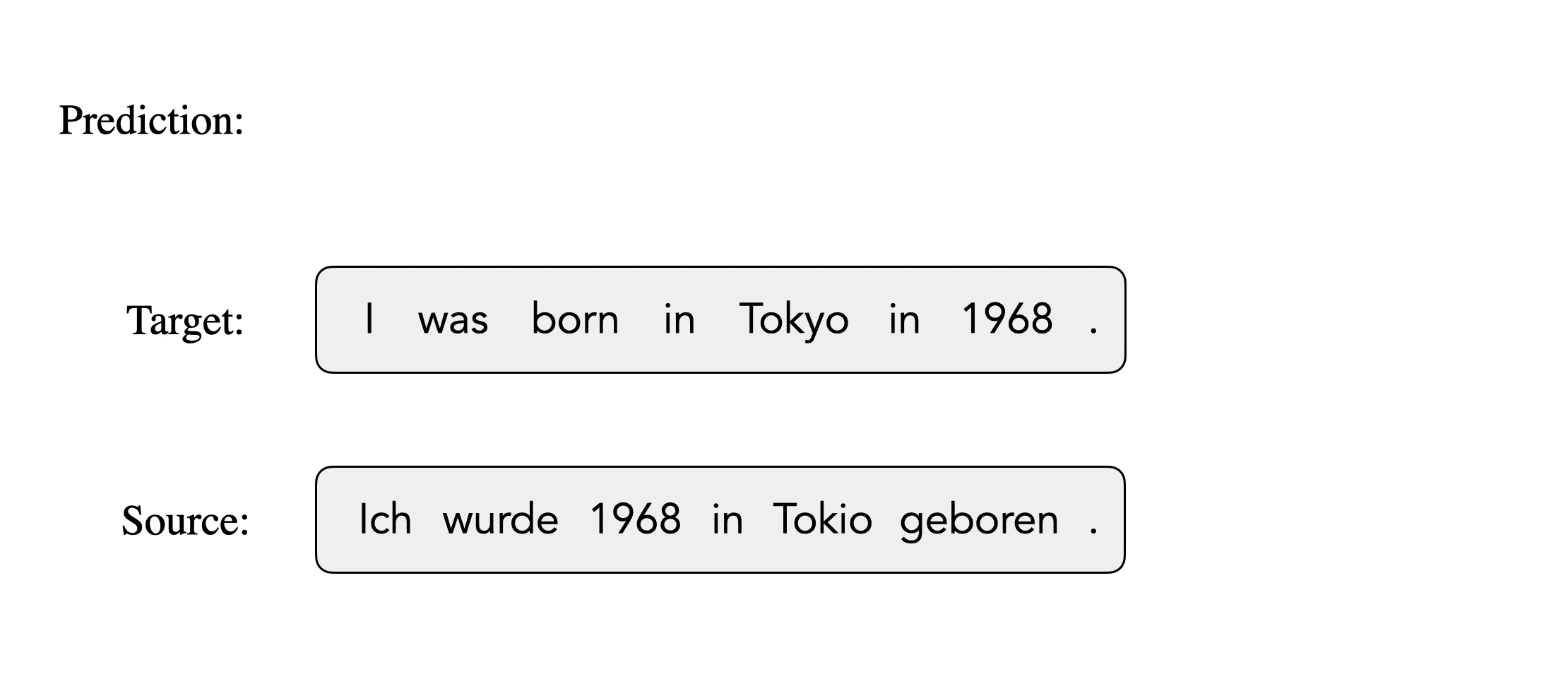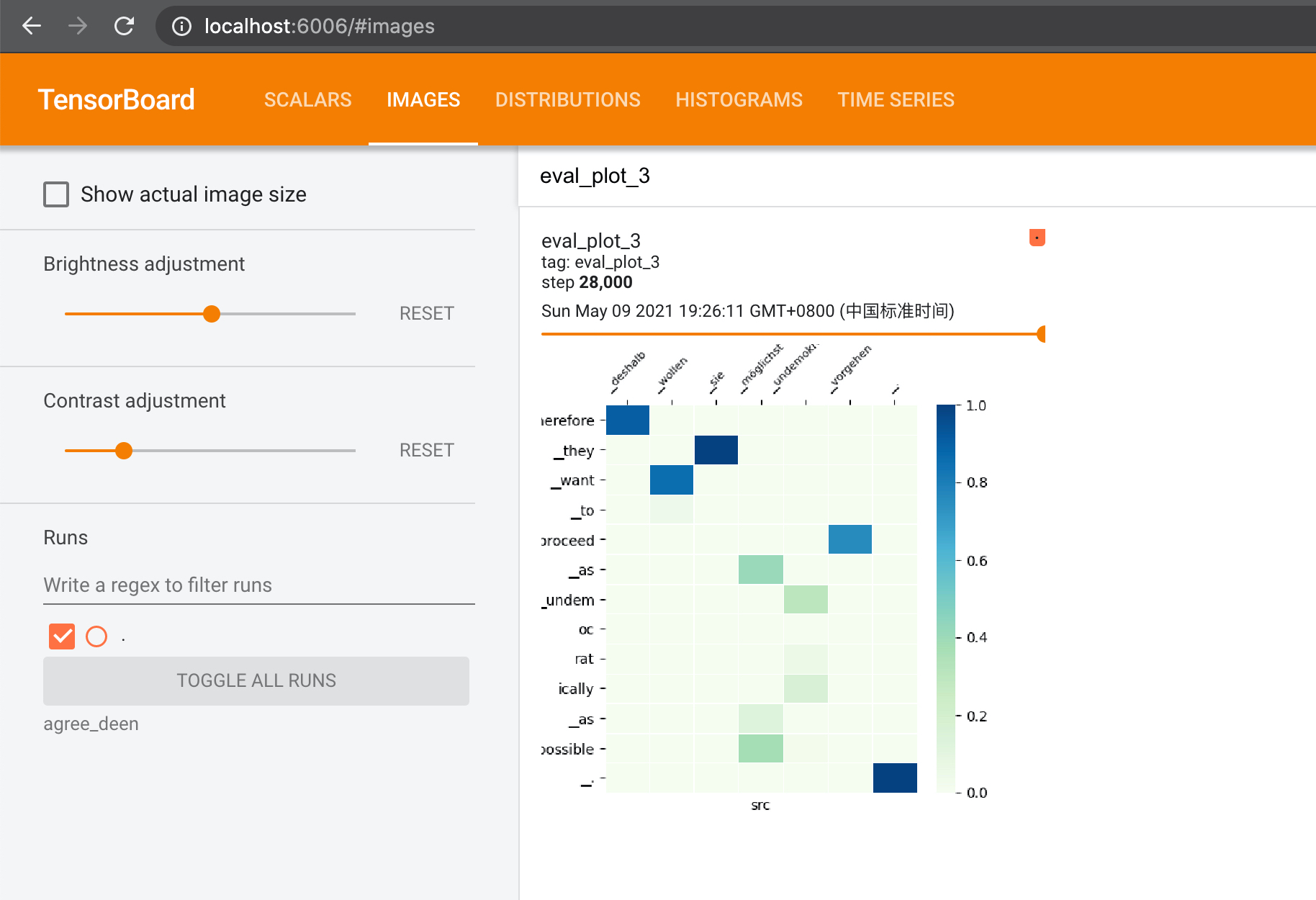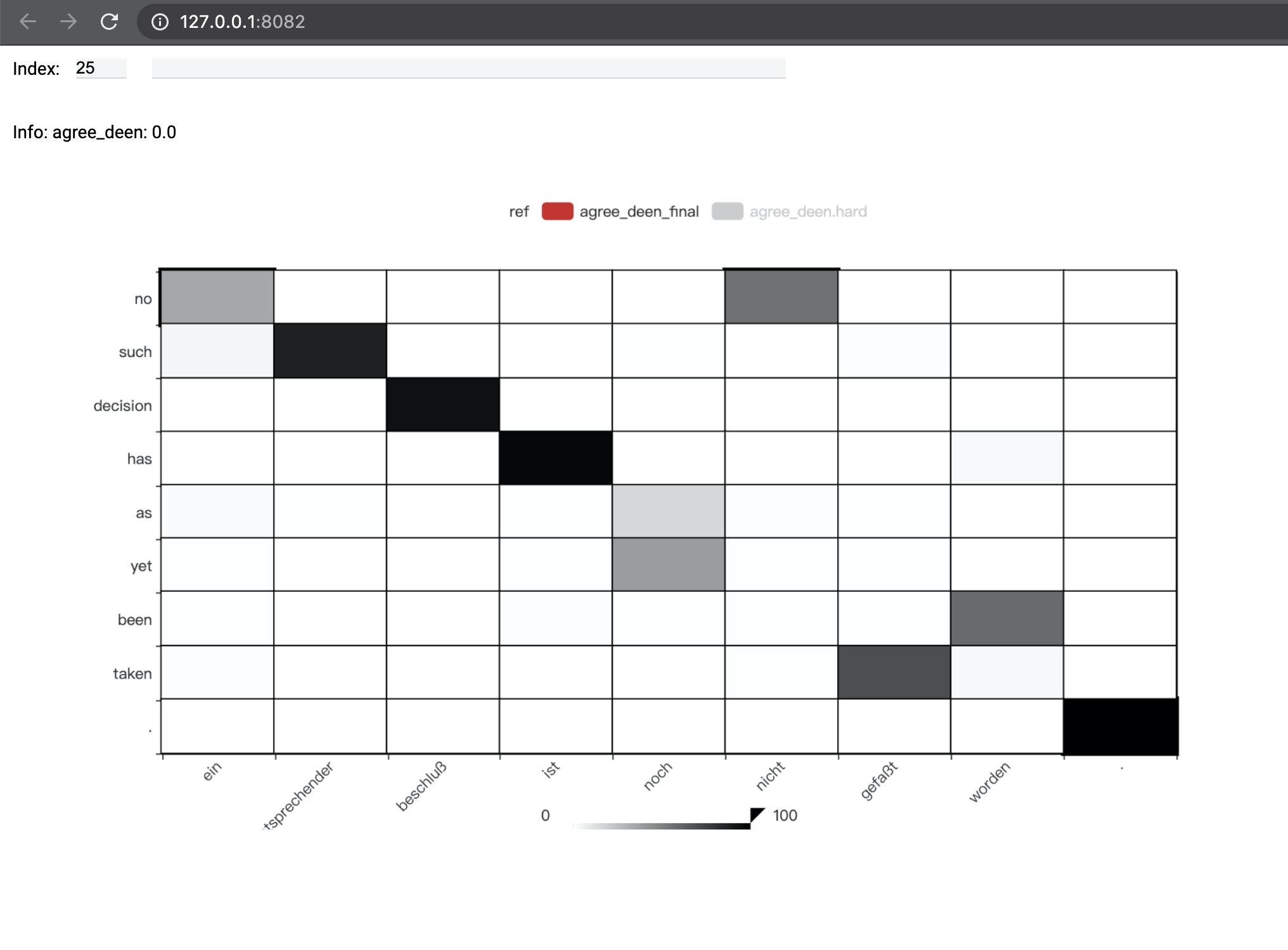Mask-Align
This is the implementation of our work Mask-Align: Self-Supervised Neural Word Alignment.
@inproceedings{chen2021maskalign,
title={Mask-Align: Self-Supervised Neural Word Alignment},
author={Chi Chen and Maosong Sun and Yang Liu},
booktitle={Association for Computational Linguistics (ACL)},
year={2021}
}
Introduction
Mask-Align is a self-supervised neural word aligner.
It parallelly masks out each target token and predicts it conditioned on both source and the remaining target tokens. The source token that contributes most to recovering a masked target token will be aligned to that target token.

Prerequisites
- PyTorch
- NLTK
- remi *
- pyecharts *
- pandas *
- matplotlib *
- seaborn *
*: optional, only used for Visualization.
Usage
Data Preparation
To get the data used in our paper, you can follow the instructions in https://github.com/lilt/alignment-scripts.
To train an aligner with your own data, you should pre-process it yourself. Usually this includes tokenization, BPE, etc. You can find a simple guide here.
Now we have the pre-processed parallel training data (train.src, train.tgt), validation data (optional) (valid.src, valid.tgt) and test data (test.src, test.tgt). An example 3-sentence German–English parallel training corpus is:
# train.src
wiederaufnahme der sitzungsperiode
frau präsidentin , zur geschäfts @@ordnung .
ich bitte sie , sich zu einer schweigeminute zu erheben .
# train.tgt
resumption of the session
madam president , on a point of order .
please rise , then , for this minute ' s silence .
The next step is to shuffle the training set, which proves to be helpful for improving the results.
python thualign/scripts/shuffle_corpus.py --corpus train.src train.tgt
The resulting files train.src.shuf and train.tgt.shuf rearrange the sentence pairs randomly.
Then we need to generate vocabulary from the training set.
python thualign/scripts/build_vocab.py train.src.shuf vocab.train.src
python thualign/scripts/build_vocab.py train.tgt.shuf vocab.train.tgt
The resulting files vocab.train.src.txt and vocab.train.tgt.txt are final source and target vocabularies used for model training.
Training
All experiments are configured via config files in thualign/configs, see Configs for more details.. We provide an example config file thualign/configs/user/example.config. You can easily use it by making three changes:
-
change
device_list,update_cycleandbatch_sizeto match your machine configuration; -
change
exp_dirandoutputto your own experiment directory -
change
train/valid/test_inputandvocabto your data paths;
When properly configured, you can use the following command to train an alignment model described in the config file
bash thualign/bin/train.sh -s thualign/configs/user/example.config
or more simply
bash thualign/bin/train.sh -s example
The configuration file is an INI file and is parsed through configparser. By adding a new section, you can easily customize some configs while keep other configs unchanged.
[DEFAULT]
...
[small_budget]
batch_size = 4500
update_cycle = 8
device_list = [0]
half = False
Use -e option to run this small_budget section
bash thualign/bin/train.sh -s example -e small_budget
You can also monitor the training process through tensorboard
tensorboard --logdir=[output]
Test
After training, the following command can be used to generate attention weights (-g), generate data for attention visualization (-v), and test its AER (-t) if test_ref is provided.
bash thualign/bin/test.sh -s [CONFIG] -e [EXP] -gvt
For example, to test the model trained with the configs in example.config
bash thualign/bin/test.sh -s example -gvt
You might get the following output
alignment-soft.txt: 14.4% (87.7%/83.5%/9467)
The alignment results (alignment.txt) along with other test results are stored in [output]/test by default.
Configs
Most of the configuration of Mask-Align is done through configuration files in thualign/configs. The model reads the basic configs first, followed by the user-defined configs.
Basic Config
Predefined configs for experiments to use.
-
base.config: basic configs for training, validation and test -
model.config: define different models with their hyperparameters
User Config
Customized configs that must describe the following configuration and maybe other experiment-specific parameters:
train/valid/test_input: paths of input parallel corpusesvocab: paths of vocabulary files generated fromthualign/scripts/build_vocab.pyoutput: path to save the model outputsmodel: which model to usebatch_size: the batch size (number of tokens) used in the training stage.update_cycle: the number of iterations for updating model parameters. The default value is 1. If you have only 1 GPU and want to obtain the same translation performance with using 4 GPUs, simply set this parameter to 4. Note that the training time will also be prolonged.device_list: the list of GPUs to be used in training. Use thenvidia-smicommand to find unused GPUs. If the unused GPUs are gpu0 and gpu1, set this parameter asdevice_list=[0,1].half: set this toTrueif you wish to use half-precision training. This will speeds up the training procedure. Make sure that you have the GPUs with half-precision support.
Here is a minimal experiment config:
### thualign/configs/user/example.config
[DEFAULT]
train_input = ['train.src', 'train.tgt']
valid_input = ['valid.src', 'valid.tgt']
vocab = ['vocab.src.txt', 'vocab.tgt.txt']
test_input = ['test.src', 'test.tgt']
test_ref = test.talp
exp_dir = exp
label = agree_deen
output = ${exp_dir}/${label}
model = mask_align
batch_size = 9000
update_cycle = 1
device_list = [0,1,2,3]
half = True
Visualization
To better understand and analyze the model, Mask-Align supports the following two types of visulizations.
Training Visualization
Add eval_plot = True in your config file to turn on visualization during training. This will plot 5 attention maps from evaluation in the tensorboard.

These packages are required for training visualization:
- pandas
- matplotlib
- seaborn
Attention Visualization
Use -v in the test command to generate alignment_vizdata.pt first. It is stored in [output]/test by default. To visualize it, using this script
python thualign/scripts/visualize.py [output]/test/alignment_vizdata.pt [--port PORT]
This will start a local service that plots the attention weights for all the test sentence pairs. You can access it through a web browser.

These packages are required for training visualization:
- remi
- pyecharts
Contact
If you have questions, suggestions and bug reports, please email [email protected].



